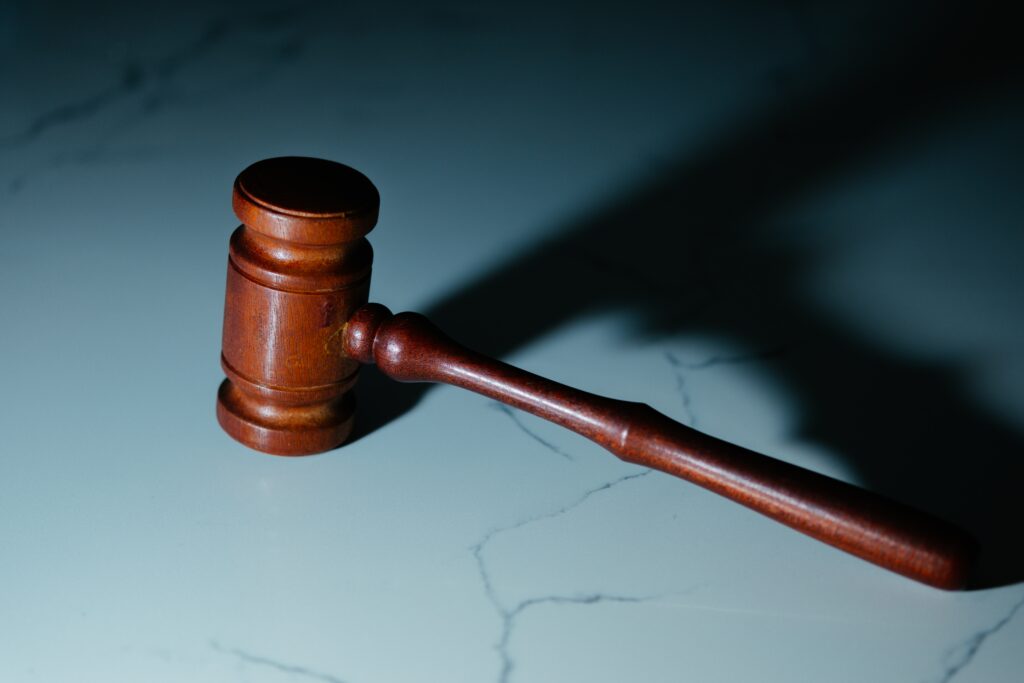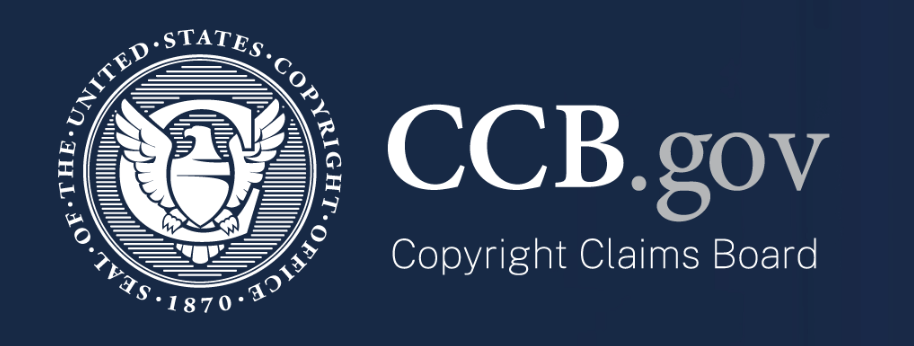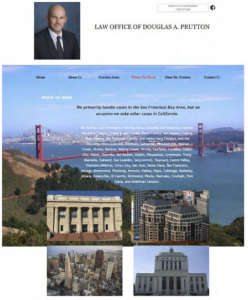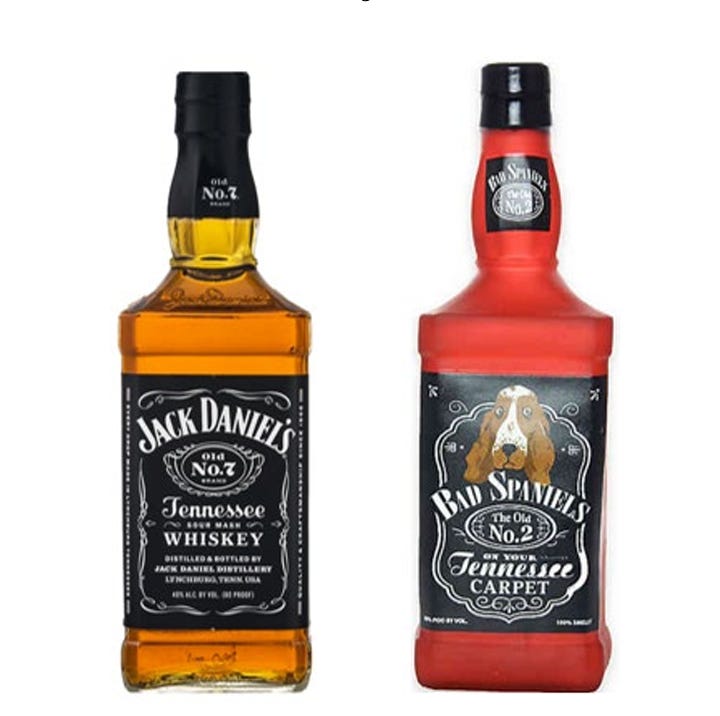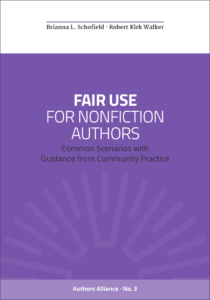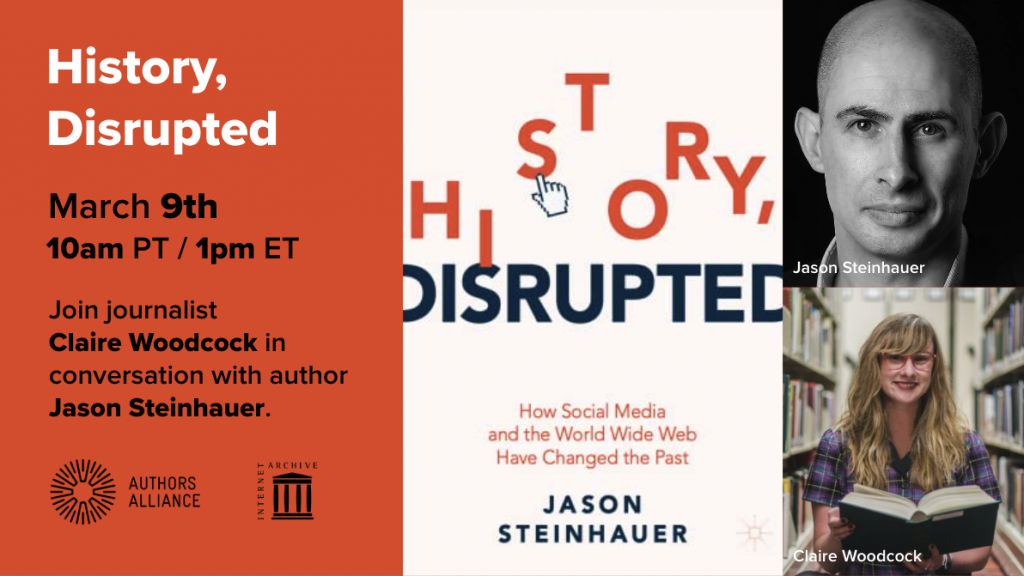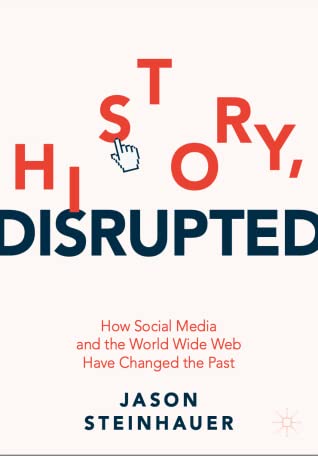This post is by Dave Hansen and also posted to the Fair Use Week blog here.
Fair use is an essential part of the Copyright Act’s careful balance—on the one hand protecting rightsholders’ interests, while on the other “[permitting and requiring] courts to avoid rigid application of the copyright statute when, on occasion, it would stifle the very creativity which that law is designed to foster.” The Supreme Court has explained that fair use is a core part of what makes the Copyright Act compatible with the First Amendment guarantee of free expression. “First Amendment protections are ‘embodied . . . ’ in the ‘latitude for scholarship and comment’ safeguarded by the fair use defense.”
Fair use is what has allowed biographers to quote critically from originals when writing their own works, even when the copyrights are owned by the rich and powerful, as in cases involving L. Ron Hubbard and Howard Hughes. It’s what allows researchers to write and quote from unpublished manuscripts for literary criticism, as in this case about scholarly use of an unpublished work by Marjorie Kinnan Rawlings Baskin. It’s also what has allowed libraries to provide copies of books to blind readers, conduct research across texts, and make preservation copies. It allows reuse of images in support of news and political commentary, supports researchers who use tools like Google Image Search, and allows artists to use source materials to create transformative new works, such as parody.
Two easy steps to evade fair use
Given its importance, it may surprise you to learn that fair use is remarkably easy to evade. Savvy copyright owners do it all the time. It takes just two easy steps.
First, you need to write a contract, specifically a “license” for the use of your work. In it, you dictate the terms on which you provide access to your work. You can impose almost any restrictions you like. Sometimes, contracts will restrict certain classes of uses: “you cannot reproduce this content for commercial use” or “you may download one copy of this work for personal consultation; you cannot reproduce or share any part of this work in whole or in part in any form, or share in any form with the public.”
Other contractual terms guard against specific threats. For example, Disney once won a lawsuit over use of its movie trailers, which Disney would license to websites only if they agreed that the website “may not be derogatory to or critical of the entertainment industry or of [Disney] (and its officers, directors, agents, employees, affiliates, divisions and subsidiaries) or of any motion picture produced or distributed by [Disney].”
The key here is that you can essentially rewrite the rules, and forbid those aspects of fair use that you disapprove of. Want to make sure critics can’t use your words against you? Just say they can’t. Want to make sure libraries don’t make preservation copies without paying you first? Want to make sure that instructors of college classes can only use excerpts of your book—even very small excerpts—if they pay every single time? It’s your prerogative.
Second, you need to make sure that everyone who gains access to your work is bound by your license. This sounds hard, but with online distribution, it’s actually pretty easy.
In the world of print copies, this was difficult because copies had a way of traveling beyond the control of the original purchaser. The “first sale” doctrine meant that buyers of copies could freely transfer those copies to third-party buyers (e.g., someone who buys a book at a used book store, or who borrows a book from a library) or give them away. So, even if you got the original buyer to agree to your terms, those downstream users didn’t have to. But there is no widespread acceptance of a buyer’s “digital first sale.” So, buyers can’t just transfer the copies they purchase to downstream users. Everyone who wants access to the digital copy must agree to the license. All you have to do is make sure that your materials are distributed exclusively on digital platforms that are subject to your terms, and you’re all set.
That’s it. Two easy steps and you’ve practically eliminated fair use. For any use you haven’t already authorized, you can just say no, require them to pay whatever you want, or just refuse to grant access. And if they don’t comply, at a minimum you’ve got at a slam-dunk breach of contract claim.
Is it Seriously That Easy?
Unfortunately, this two-step approach–sometimes known as “contractual override”–reflects the prevailing wisdom and practice of many copyright owners. It is widely used online, by parties ranging from massive corporations such as Amazon or Netflix to small publishers and news outlets. And though the precedent for it isn’t airtight, when it has come up in court, the licensors have mostly prevailed. Because U.S. law so venerates “freedom of contract,” it has been difficult for policymakers or the courts to address the problem of rightsholders forbidding lawful fair uses under the terms of their licenses.
How did we get to this point? This is not a new or unexpected problem. You can look back to 1993, when law professor Jane Ginsburg foresaw this state of affairs just as the possibilities of the internet were coming into view:
“In the digital environment posited here, contract protection may not be the fragile creature presumed in prior intellectual property preemption decisions. If access to works could be obtained only through the information provider (directly or through an authorized online distributor), and if copying could be electronically tracked or prevented, no ‘third parties’ to the contract would exist. When ‘we’re all connected,’ no functional difference may exist between a contract and a property right. At that point, it becomes necessary to consider whether limitations incorporated in the copyright law should be imported to its contractual substitute.”
Numerous others in the legal community soon made similar observations, such as Julie Cohen, Niva Elkin-Koren, and Andrew Shapiro, among others, who also wrote about aspects of this then-new challenge.
How to Protect Fair Use from Contractual Override
A handful of efforts to address this problem have been mounted in Congress. In 2003 and 2005, representative Zoe Lofgren introduced a bill appropriately called the BALANCE Act (“Benefit Authors without Limiting Advancement or Net Consumer Expectations”), which addressed both the unavailability of “first sale” in the digital environment and contractual override of fair use. The proposed legislation provided that “[w]hen a digital work is distributed to the public subject to nonnegotiable license terms, such terms shall not be enforceable under the common laws or statutes of any State to the extent that they restrict or limit any of the limitations on exclusive rights under this title.” The BALANCE Act never passed however, and hasn’t been revisited in Congress since 2005.
Recent actions in other jurisdictions may provide renewed legislative interest and guidance on possible models to adopt. For example, in 2014, the UK passed legislation that limits contractual override of user rights—providing that “to the extent that a term of a contract purports to prevent or restrict the doing of any act which, by virtue of this section, would not infringe copyright, that term is unenforceable.” This language has been applied in the UK to exceptions that allow for making copies for persons with print and other disabilities, research and teaching, and text and data-mining. Similarly, the EU’s recent Copyright in the Digital Single Market Directive contains similar protections for copyright exceptions, as does Singapore’s recent copyright bill. So far, though, there has been no indication of real interest from Congress in the United States.
It’s also possible that states could craft legislation. There has recently been a surge of interest in bills in a number of states aimed at protecting libraries’ ability to license books on reasonable terms (bills that Authors Alliance generally supports). These bills also go beyond what fair use protects—seeking to, for example, ensure that libraries have broad access to ebooks on “reasonable terms,” and addressing problems of major publishers simply refusing to license books to libraries. Maryland was the first state to actually pass such a law, but it was struck down as preempted by federal copyright law in AAP v. Frosh. The court concluded that because federal copyright law dictates the scope of rights governing public distribution of works, it was impermissible for the state of Maryland to interject its own rules about the scope of the publishers’ distribution rights.
It’s possible that state legislation that is more narrowly tailored—e.g., a state law that focused solely on protecting fair use—would not suffer the same fate as the Maryland law. In fact, the reasoning of the Maryland e-lending case would seem to support such a state law, since a state law protecting fair use would be maintaining, rather than altering, the balance of rights as defined by federal law.
Legal Strategies in Court
It’s also possible that the courts could intervene, though so far they have mostly declined to do so. It seems to me there are two or three viable ways for judicial intervention to be effective:
First, Courts could conclude that contracts (created under and governed by state law) are preempted by federal copyright law, which is what defines the scope of copyright’s exclusive rights. The Constitution provides that federal law supersedes conflicting state law, and Congress has provided specific instructions on how such preemption should apply, stating that “all legal or equitable rights that are equivalent to any of the exclusive rights within the general scope of copyright as specified by section 106 . . . are governed exclusively” by federal copyright law. Those exclusive rights of copyright owners are explicitly defined as being “subject to” the limitations including fair use, so it would make some sense for courts to view state law expansions of those rights as being in conflict with and therefore preempted by federal copyright law.
However, there are several negative precedents indicating that this approach may not work. Take Bowers v. Baystate, for example, a Federal Circuit case involving two competing computer aided design (CAD) software companies. Bowers contended that Baystate violated the terms of use on its software by reverse-engineering its product in violation of a clause explicitly prohibiting such use. Baystate contended that such reverse engineering was protected by fair use and that contract terms to the contrary should be preempted as inconsistent with federal law. The Federal Circuit, observing that as a general matter “most courts to examine this issue have found that the Copyright Act does not preempt contractual constraints on copyrighted articles,” concluded that “private parties are free to contractually forego the limited ability to reverse engineer a software product under the exemptions of the Copyright Act. . . . [A] state can permit parties to contract away a fair use defense or to agree not to engage in uses of copyrighted material that are permitted by the copyright law, if the contract is freely negotiated.”
Other courts addressing state contract law and other state law limitations on fair use (e.g,. this California right of publicity case) have largely followed the same approach. One notable exception to is Vault Corp. v. Quaid Software, Ltd., in which the Fifth Circuit invalidated a Louisiana law that permitted contracts to prohibit reverse engineering, even though federal law provides a specific exception (Section 117) that allows for such reverse engineering. Although not directly addressing fair use, the court’s holding could apply equally to state law contractual restrictions on fair use. The issue has not directly reached the Supreme Court, though there is a case, Genius v. Google, currently pending on a Petition for Certiorari that asks the Court to weigh in on the broader question of when federal law preempts contracts under state law.
Second, courts could conclude that the state common law (the body of law made up of legal principles established by courts over the years) on contracts does not permit contractual restrictions on fair use. This could come in a few different forms. One option might be for courts to consider more seriously the question of whether a valid contract is actually created in the first place, particularly in situations where users have no meaningful opportunity to negotiate terms and little ability to even understand what restrictions they are agreeing to. For years, following the lead of the Seventh Circuit Court of Appeals in ProCD v. Zeidenberg, courts have been willing to accept that a valid agreement is formed even in situations with “shrinkwrap” or “browsewrap” licenses. But, despite ongoing criticism of this approach by many, the approach has prevailed. Courts might also take more seriously the public policy implications of fair use evasion more directly, by invoking traditional rules for contract interpretation that hold terms unenforceable when they violate public policy—e.g., agreements to commit a crime, or a tort, or restraint of trade. To date, however, I’m unaware of any such cases directly applying these principles to contracts that restrict fair use, though there is a large body of case law and this may merit more research.
Third, the courts could apply existing or new equitable doctrines, such as “copyright misuse” or a yet-to-be-defined right of “fair breach” to protect users from overenforcement of contracts that limit fair use. Professor Jane Ginsburg outlines the potential need for courts to develop their own remedy of “fair breach.” She observes that, as with the current licensing environment online, at some point “it becomes necessary to consider whether limitations incorporated in the copyright law should be imported to its contractual substitute. With respect to libraries and their users, one should inquire whether some kind of fair use exception is appropriate. This might take the form of a judge-made right of ‘fair breach,’ or legislatively imposed mandatory library-user rights.”
This idea of “fair breach” has drawn little attention since Ginsburg first identified its need and coined the term, but it merits further attention. “Fair breach” may have some similarity to the existing doctrine of copyright misuse, which could have some application to contracts that restrict fair use. A judge-made doctrine borrowed from the patent law doctrine of patent misuse, copyright misuse has been mostly applied to situations where copyright owners have attempted to exercise their rights to unfairly stifle competition. The primary question with copyright misuse is “whether the copyright is being used in a manner violative of the public policy embodied in the grant of a copyright.” If copyright misuse is found, the copyright isn’t invalidated, but courts have held that the owners’ copyright cannot be enforced to exclude the harmed party’s use. The Supreme Court has yet to acknowledge the existence of this doctrine, but numerous appellate courts have recognized it over the last thirty years.
A handful of cases suggest that extension of copyright misuse to fair-use limiting contracts could be effective. For example, in Assessment Technologies of Wi, LLC v. Wiredata, the Seventh Circuit Court of Appeals held that Assessment Technologies’ attempt to restrict access to data that was not copyrighted fell within the copyright misuse doctrine’s core focus: “preventing copyright holders from leveraging their limited monopoly to allow them control of areas outside the monopoly.”
Video Pipeline, Inc. v Buena Vista Home Entertainment, Inc., also gives some encouragement. In that case, Video Pipeline brought a declaratory judgment action seeking a judgment that its use of video trailers from Disney and others was not copyright infringement. Among the defenses it cited was copyright misuse on the part of Disney. To support its copyright misuse argument, Video Pipeline pointed to the license term I mentioned at the beginning of this blog post, which conditioned the license on an agreement to not disparage Disney or the entertainment industry. The court ultimately declined to find that those terms constituted copyright misuse, because the contract had a narrow focus and limited application: “we nonetheless cannot conclude on this record that the agreements are likely to interfere with creative expression to such a degree that they affect in any significant way the policy interest in increasing the public store of creative activity. The licensing agreements do not, for instance, interfere with the licensee’s opportunity to express such criticism on other web sites or elsewhere.” However, the court suggested that the outcome could have been different if the restrictions were more far reaching.
Conclusion
Contractual override of fair use poses a real threat to free expression, especially given the increasing limits on distribution of copyrighted works online. Almost all online platforms that distribute copyrighted works impose restrictions that inhibit fair use to some degree. It takes just two easy steps. Thankfully, there are some plausible routes forward for improving the law to protect authors and others who rely on fair use to create new works and share knowledge with the world. There is also some reason for optimism due to renewed interest in the issue among scholars and organizations such as the Association of Research Libraries, which issued a report on contractual override for libraries, and is co-hosting a symposium with Washington College of Law at American University on the subject with perspectives from around the world.
